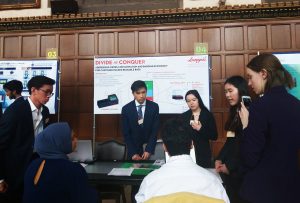You may have heard that audiences will form an impression of a presenter within the first 15 seconds of hearing them speak. Creating a good first impression of your presentation is challenging enough, but once you’ve achieved that, how do you keep your audience listening? And if their attention begins to wander, how do you get it back? In an engineering presentation holding an audience’s attention can be especially challenging when presenting technical details that may be unfamiliar to listeners who are not as close to a project as you are. An audience whose attention has wandered can become disinterested or confused about critical information on which they may need to act.
Having viewed thousands of presentations our communication experts agree that a well-defined Purpose Statement and Main Idea are critical principles for keeping your audience’s attention where you need it to be.
Purpose
Engineering presentations must have a clear purpose or objective. Perhaps you are trying to persuade an audience of the value of a new technology, or maybe you are trying to report on and explain a challenge you faced during its development. You can often clarify your purpose to yourself by distilling it into a verb (persuade, report, explain, etc).
Keep in mind that the purpose of the presentation is not something you necessarily say during your presentation. Your purpose should operate in the background to help you select the right information to discuss and organize it in a manner that achieves your goal. Everything you say and do during your presentation should be designed to accomplish this purpose or objective.
Main Idea
Unlike the purpose, which is action-based and implicit, the main idea is content-based and should be stated explicitly; it is the message you want to send to your audience. According to Dan and Chip Heath’s study on the mechanics of memorable ideas, your main idea should be simple; but this does not mean it should be simplistic. It means that you must strip away superfluous excess and abstraction to find the core of your idea and convey that core to your audience. Once you have identified this core you can return to it frequently during a presentation to reorient and focus your audience when you must discuss digressions or abstractions. It should function like an anchor.
For more on giving engineering presentations have a look at our Engineering Communication Handbook

